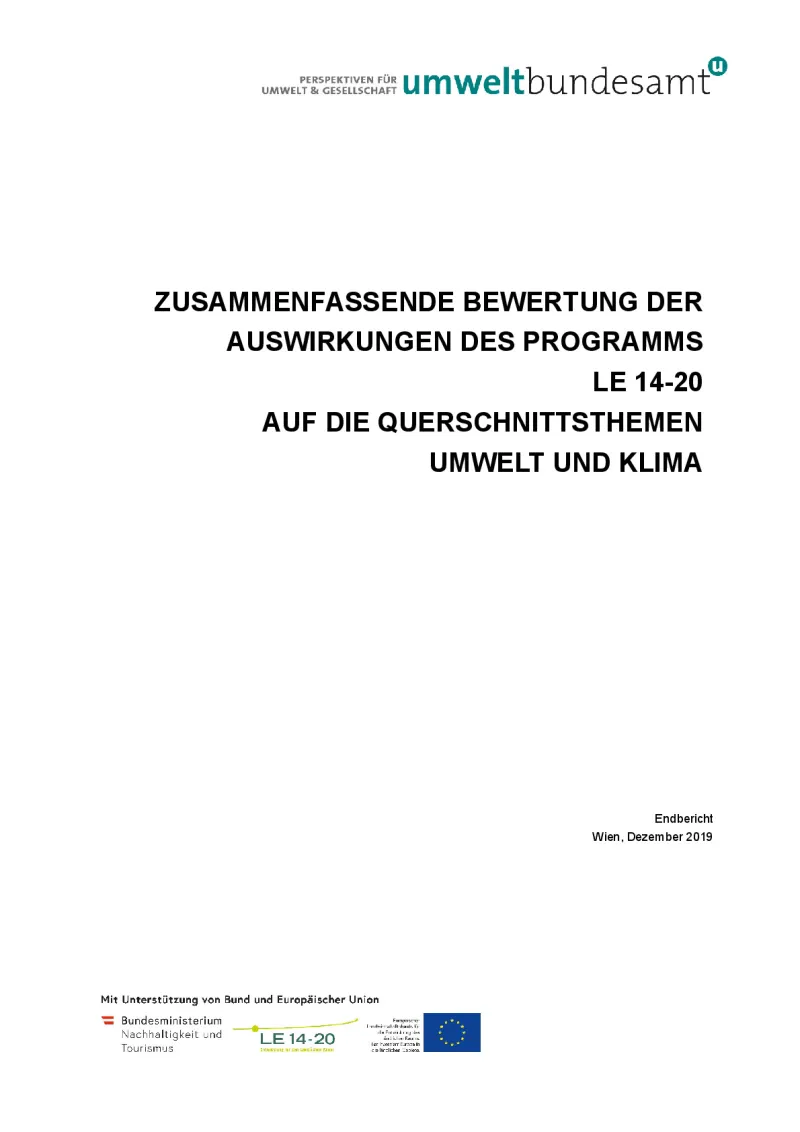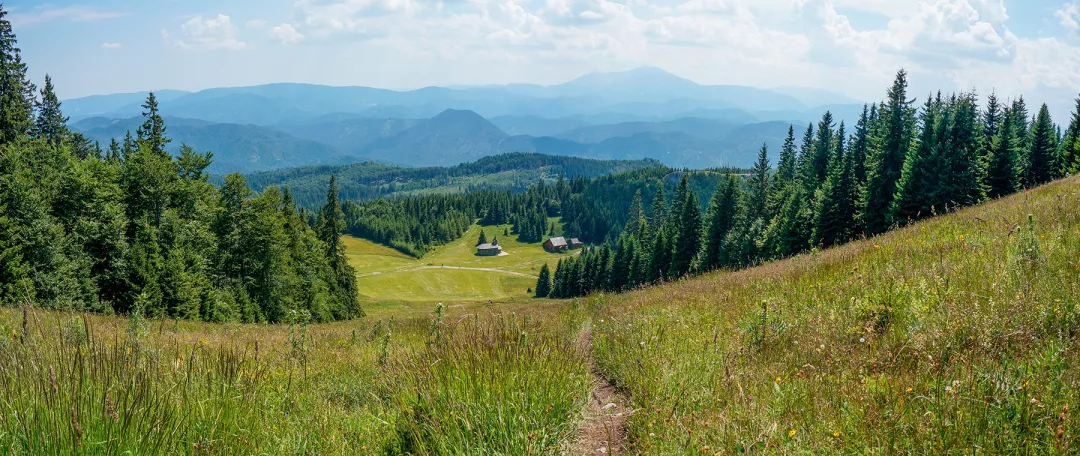Summary assessment of the Austrian Rural Development Programme on the cross-cutting issues of environment and climate
The evaluation reports on the achievement effectiveness related to Priority 5 (Resource efficiency, low carbon and climate resilient economy) and Priority 4 (Ecosystems related to agriculture and forestry) of the Rural Development Programme (RDP).
- Austria
- 2014-2022
- Cross-cutting impacts


The evaluation takes stock of the effects of the 2014-2020 Austrian RDP on the environment, climate, biodiversity and water quality after three years of implementation. It was carried out by 19 experts from various Austrian institutions (Federal Environment Agency, University of Natural Resources and Life Sciences, BAB and HBLFA Raumberg-Gumpenstein) and commissioned by the Federal Ministry of Sustainability and Tourism.
The evaluation focuses on the effectiveness of the achievement of measures implemented under the two RDP priorities: Priority 5 (Resource efficiency, low carbon and climate resilient economy) and Priority 4 (Ecosystems related to agriculture and forestry). It deals with the common evaluation questions (CEQ) (numbers 24, 26 and 28) reported below. Other specialised national topics, such as the RDP impact on noise, air pollution and climate change adaptation, are also addressed by this evaluation.
The extent to which the 2014-2020 RDP has contributed to reducing GHGs and protecting the climate was estimated using the model calculations of WIFO (2019) and the Federal Environment Agency.
For the assessment of the CMEF result indicators R.14 (energy efficiency) and R.15 (renewable energies), only monitoring data was available for a short implementation period. Therefore, no impacts could be assessed here.
Longer time series can also be used to assess the effects on biodiversity. However, the availability of data for Austria as a whole regarding the evaluation of RDP effects on humus content on arable land, and water quantity and quality is limited.
Overall, there are no consolidated overarching conclusions and recommendations. Each evaluation question was answered as a stand-alone topic.
Due to a lack of documentation, it was difficult to precisely assess the extent to which RDP measures, particularly knowledge transfer and information measures, contributed to adaptation to climate change.
The evaluation provides the following conclusions:
Regarding CEQ 24 - “To what extent has the RDP contributed to climate change mitigation and adaptation and to achieving the EU 2020 headline targets (…)?”:
- Due to the maintenance of area-wide agriculture, there was a slight increase in GHG emissions from the agricultural sector (+2.6%).
- An increase in emissions or a reduction in the sink in this agricultural land would be expected without individual agri-environment-climate measures (AECM), as various AECM measures have a carbon-conserving or carbon-building effect.
- On the other hand, the calculations showed a reduction (-2.6%) in ammonia emissions despite the higher livestock numbers and larger quantities of mineral fertiliser.
- The goal of increasing energy use efficiency in agriculture and food processing has not yet been achieved due to the low utilisation of planned funds in the first three years of the RDP.
Regarding EQ 26 - “To what extent has the RDP contributed to improving the environment and to achieving the EU-Biodiversity strategy target (…)?”:
- The population trends of farmland birds (have stabilised at a low level in the last 3-4 years (as of 2018)). Overall, a comprehensive package of measures for the conservation of species-rich, extensively used grassland is important for the success of the next biodiversity programme.
- Over the years, there has been a slight decrease in type 1 high nature value (HNV) farmland, which reflects the declining trend in extensive grassland areas.
- According to the impact evaluation, the RDP is the single most important factor that influences the analysed biodiversity indicators in a targeted manner. However, the RDP as a whole does not currently accurately control the decisive factors influencing biodiversity in arable land, grassland or mountain pastures. If designed appropriately, the impact of the programme could be significantly greater than at present.
Regarding EQ 28 - “To what extent has the RDP contributed to the CAP objective of ensuring sustainable management of natural resources and climate action?”:
- The evaluation shows that the preservation of extensive agricultural areas plays an important role in biodiversity and that targeted management requirements are crucial.
- The current humus content on arable land in selected areas shows that it has remained stable at a favourable level or even increased slightly in humus-consuming crops and the decrease in humus-promoting forage crops.
- Regarding water quality, the analyses show that the requirements for good chemical status regarding nitrate are not sufficiently met in areas with intensive agricultural use and low groundwater recharge.
- The contribution of the RDP to climate protection must be viewed in a differentiated manner. On one hand, there is an expansion of production and thus an increase in greenhouse gases, while, on the other, measures from the programme promote carbon build-up and preservation in the soil and ammonia emissions are reduced.
Author(s)
Federal Environment Agency Austria